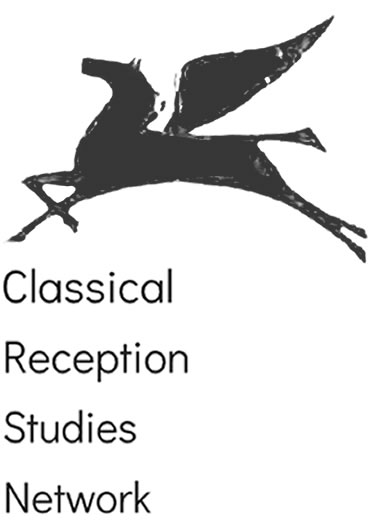In the second post in this double bill, ‘Cheap Books for Everyman: Classic Reprints and the Twentieth-century Publisher’s Series’, Caterina Domeneghini examines cheap ‘classic’ books and their ever-changing defining attributes within the frame of a well-established cultural and educational phenomenon in late Victorian and Edwardian Britain, that of the mass-market reprint series; she investigates what this publishing venture can tell us about ideas, perceptions and definitions that twentieth-century consumers constructed around the notion of the ‘classic’ as both a cultural commodity and an aesthetically pleasing object with a potential to be displayed in one’s home.
Caterina is a DPhil student at Oxford whose project combines English Literature with Classical Reception and Translation Studies. Her research explores the elusive questions ‘what is a classic?’ and, more broadly, ‘what is world literature?’ from the perspective of a twentieth-century British publisher. Her primary focus is Everyman’s Library, the popular series of national and international classics in translation launched by the working-class autodidact Joseph Dent in 1906 and reaching one thousand volumes fifty years later with Aristotle’s Metaphysics. She is especially interested in canon building and the role of translation in the formation of a national literary identity in Britain and beyond.
Cheap Books for Everyman: Classic Reprints and the Twentieth-century Publisher’s Series, by Caterina Domeneghini
Approaching the world’s “great books” with a classicist’s tool kit
The transition from the nineteenth to the twentieth century in Britain saw the consolidation of a mass-market phenomenon which widely contributed to bring cheap ‘classics’, including ancient authors in translation, to more socially variegated readerships: the phenomenon of the so-called reprint series, otherwise known as the publisher’s series. As a doctoral student working at the intersection of Classical, English and Translation Studies, I aim to give an overview of what the concept of ‘classic’ might constitute from a publisher’s perspective on the eve of the twentieth century. The ‘classic’, importantly, took on a whole new range of cultural meanings at this time, as a result of social and institutional interventions which, while eroding the authority of ‘Classics’ as ‘an élite social formation’ (Stray 1998: 83), also shifted it from its exclusively Greco-Roman connotation to a larger definition of ‘classics’ in the general sense of ‘great books’, encompassing a variety of vernacular languages and literatures (Denecke 2019: 33). An investigation of the ‘classic’ in this mobile sense can reap benefits in various correlated disciplines. On the one hand, I explore what the intellectual framework of a classicist working in Reception Studies can do for Publishing Studies, and how it can illuminate certain commercial decisions that have shaped our notions of the literary past in the last two centuries. On the other, I illustrate how methodologies of Book History can be conducive for classicists in analysing certain works not only as literary texts but also as objects of material significance, and how treating books as archives can bring us closer to considerations that readers at the time made when they evaluated aspects such as price, bindings, design, and format.
A case study: The Everyman’s Library series
My doctoral project examines the widely exploited, ever-elusive question ‘what is a classic?’ from the perspective of the working-class autodidact and publisher Joseph Malaby Dent (1849–1926) and his Everyman’s Library. Launched in 1906, the series reached the quota of one thousand volumes, marketed in batches of fifty books at one shilling each, in 1956. It has been acclaimed ‘the standout name in translated classics’ ever since (Hall 2019). The fundamental premise of my research is that any ‘interrogation of the classic’, to reprise J. M. Coetzee’s phrasing in What Is a Classic? (1992: 19), cannot help but take as its point of departure an analysis of the concept of ‘Classics’ in a Greco-Roman sense: how did twentieth-century publishers manage to (re)negotiate a place for Greek and Roman authors within literary series that were by now largely dominated by the national classics and, in smaller proportion, modern foreign literature? This approach, I suggest, has two significant payoffs. Concretely, it allows an opportunity for:
a) Glancing back at Greece and Rome with a more critical eye
As archival research reveals, perceptions of what constitutes a ‘classic’ by the early twentieth century still stemmed, largely and quite inevitably, from Greek and Latin literature – particularly from certain concepts or ideas which the term ‘Classics’ seemingly evoked. In allowing further critical reflection on the ambiguity, even deceptiveness of such concepts, my approach pays debts to the recent work of nine scholars of Classical Reception, Postclassicisms (2020), which re-evaluates key ‘classic’ attributes that classicists themselves have frequently misconceived. ‘Timelessness’, for example, is ‘the quality that has so often (and so misleadingly) been ascribed to classical literature and art: the ability to communicate unchanging and transcendent value over time’ (29). The lesson is equally instructive for the field of Publishing Studies: terms such as ‘timeless’, ‘permanence’, ‘universal’ have too often been analysed unproblematically as they were cropping up in publishers’ prospectuses, with no backward reference to debates concerning Greco-Roman literature in which such terms originated from the start.
b) Understanding “classic” literature as a transnational phenomenon
In considering the use of the term ‘classic’ for competing sets of writing (Greco-Roman, English, modern foreign) and examining their interactions within Dent’s series, my approach moves against the work of scholars who have exclusively focused on national authors in cheap formats. John Spiers, paraphrasing Jennifer Alison (2009), has made the claim that ‘an individual publisher can have an enormous and conscious impact in establishing a purely national literature of prose and poetry, and a new sense of a “nation”’ (2011: 5; my italics). Does ‘purely national’ here mean the national classics of English Literature only, or should we take it to include English translations too? The distinction has rarely been addressed or problematised. A comparative approach that brings the two disciplines together could nourish an idea of canon formation as a more comprehensive process, one in which ancient and modern foreign classics in translation, far from being overshadowed by their English counterparts, equally played a role in the construction of national literary identities.
A “cultured” bookshelf (and its troubles)
This shifting perception of the ‘classic’ and its values across the twentieth century is also manifest on the level of the materiality of the books. Mary Hammond has argued that by the turn of the new century ‘a “classic” has to be more than a literary work; it must also be part of a series that both completed and supported it, and bound and marketed it in the right way’ (2006: 95). Here, book aesthetics and commercial strategies become crucial factors for the assessment of what a ‘classic’ is or is not, as ‘displayability’ gets promoted as one of its distinctive attributes: the books in a series were to be of the same size and bound in different colours according to genre to look appealing on the shelf. (Everyman’s Library had crimson for Fiction, olive for Poetry, dark green for Science, etc.) What the advertisements of such books proclaimed was durability, a lasting shelf life. The volumes also typically featured an introduction by an authoritative scholar or literary figure, which would confer extra cultural capital on them and their buyers, regardless of their social or financial status.
The notion of ‘displayability’ offers some common ground for the overlapping preoccupations of Reception Studies scholars and book historians. How many books, and which ones, were read and not simply bought and displayed for a pretence of culture? To track and trace a history of audiences, as Jonathan Rose has strongly advocated (1992), is an arduous enterprise because we have limited access to readers’ experiences: we hardly know which editions they read and what they thought of the books they purchased. The lack of insights into individual lives has led literary sociologists and critics to the conclusion that ‘a book is a classic almost wholly because a particular publisher says it is’ (Hammond 2006: 94), which seems to marginalize the place of readers and their receptions in twentieth-century constructions of the ‘classic’. The question that Hall and Stead (2020: 69) pose at the end of their chapter on working-class readers remains open: was the massification of culture imposed on the working classes from above? We can only attempt to answer this question through more archival research. If we do not have access to reading experiences in the form of correspondence or memoirs, we can still analyse patterns of consumption within a series and see what we can deduce of a reader from text, paratext, sales and prices.
To be, or not to be, ‘classic’
I shall leave our readers with one final provocation. As the former publishing assistant Rebecca Barry has shown (2003), the use of ‘classic’ as a marketing category, ranging from film and television to capitalistic products in the food and cosmetic industries, has now become so stretched that we might consider abandoning the term all together – all the more, as Christopher Prendergast has added, ‘when we recall how it was used in the twentieth century to denounce “barbarism” in the name of a far more lethal form of the barbaric’ (2008: 308). Our contemplation of the ‘classic’ today may take the shape of another Shakespearean dilemma. To relinquish it, or to retain it. That is the classic question of our times.
WORKS CITED
Alison, J. 2009. Doing Something for Australia. George Robertson and the early years of Angus and Robertson, Publishers, 1888-1900. Melbourne: Bibliographical Society of Australia and New Zealand
Barry, R. R. 2003. ‘The Neo-Classics: (Re)Publishing the “Great Books” in the United States in the 1990s’. Book History, 6, 251–275
Coetzee, J. M. 1992. ‘What Is a Classic?’. Stranger Shores: Essays, 1986-1999. London: Vintage Books, 1–19
Collective Author. 2020. Postclassicisms. Chicago; London: The University of Chicago Press, 8–18
Hall, E. and Stead, H. 2020. A People’s History of Classics: Class and Greco-Roman Antiquity in Britain and Ireland, 1689 to 1939. London: Routledge, 45–72
Hall. E. 2019. ‘Classics for the people’ [renamed from: ‘Why Working-class Britons Loved Reading and Debating the Classics’]. Accessed online at: https://aeon.co/essays/why-working-class-britons-loved-reading-and-debating-the-classics
Hammond, M. 2006. Reading, Publishing, and the Formation of Literary Taste in England, 1880–1914. Aldershot: Ashgate
Denecke, W. 2019. ‘What Does a Classic Do? Tapping the Powers of a Comparative Phenomenology of the Classic/al’. In M. Maufort (ed.) Recherche littéraire/Literary Research. Peter Lang International Academic Publishing Group, 29-57
Prendergast, C. 2007. The Classic: Sainte-Beuve and the Nineteenth-Century Culture Wars. Oxford: Oxford University Press
Rose, J. 1992. ‘Rereading the English Common Reader: A Preface to a History of Audiences’. Journal of the History of Ideas, 53(1), 47–70
Spiers, J. 2011. ‘Introduction: Wondering about “the Causes of Causes”: The Publisher’s Series, Its Cultural Work and Meanings. Part Two: The Series, the Academy, and the World’. In J. Spiers (ed.) The Culture of the Publisher’s Series. Vol. 2: Nationalisms and the National Canon. Basingstoke: Palgrave Macmillan in association with the Institute of English Studies, 1–47
Stray, C. 1998. Classics Transformed: Schools, Universities and Society in England 1830–1960. Oxford: Clarendon Press
CLASSICS AND THE MASS MARKET FURTHER READING
Collective Author, Postclassicisms. (Chicago; London 2020)
Dunstan, L. and Shahabudin, K. Classics for All: Reworking Antiquity in Mass Culture (Newcastle Upon Tyne 2009)
Goldhill, Simon, Victorian Culture and Classical Identity: art, opera, fiction, and the proclamation of modernity (Princeton 2011)
Hall, E. and Stead, H., A People’s History of Classics: Class and Greco-Roman Antiquity in Britain and Ireland, 1689 to 1939. (London 2020)
Stray, Christopher, Classics Transformed: Schools, Universities and Society in England 1830-1960 (Oxford 1998)
The image at the top of this post is from Unsplash.
Read Part I, ‘Authenticity for Sale: Classics and the heritage industry’, by Claire Barnes

